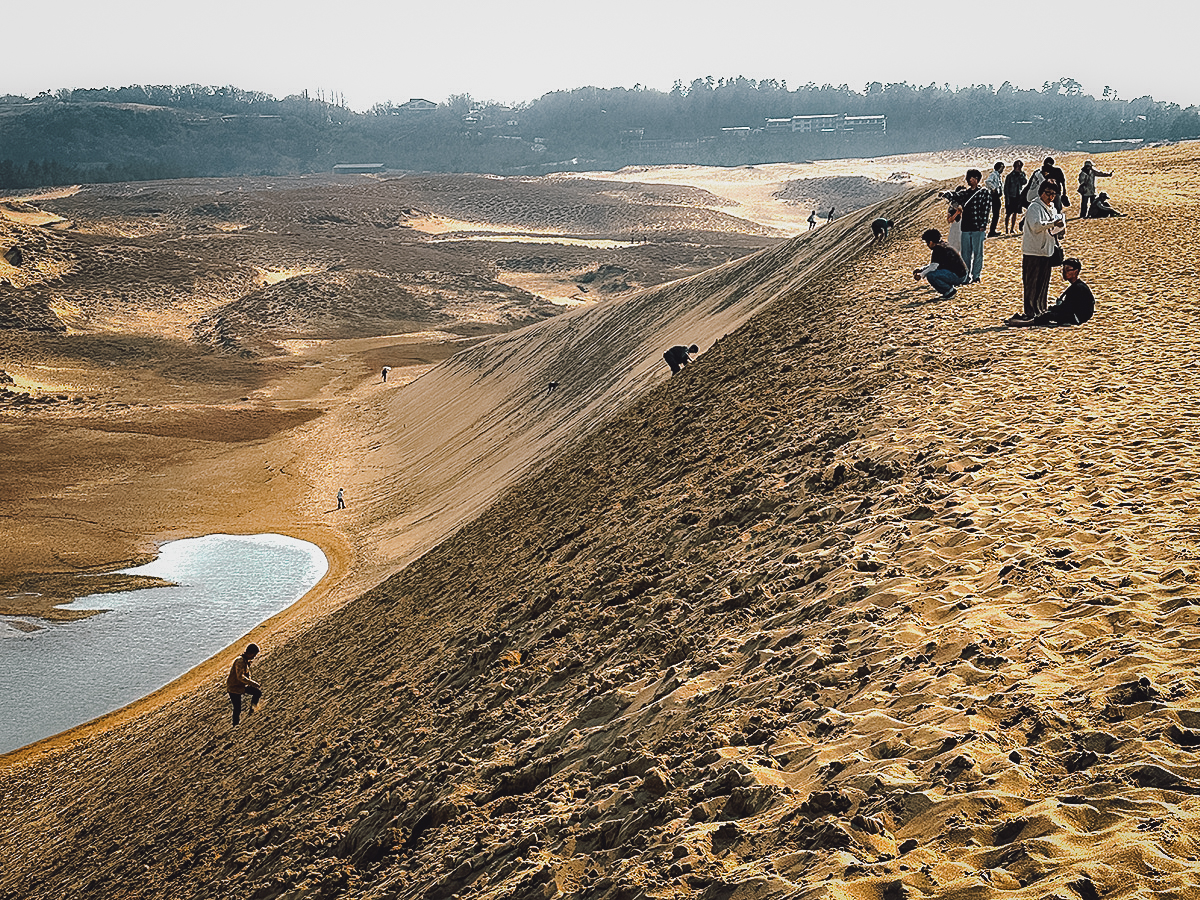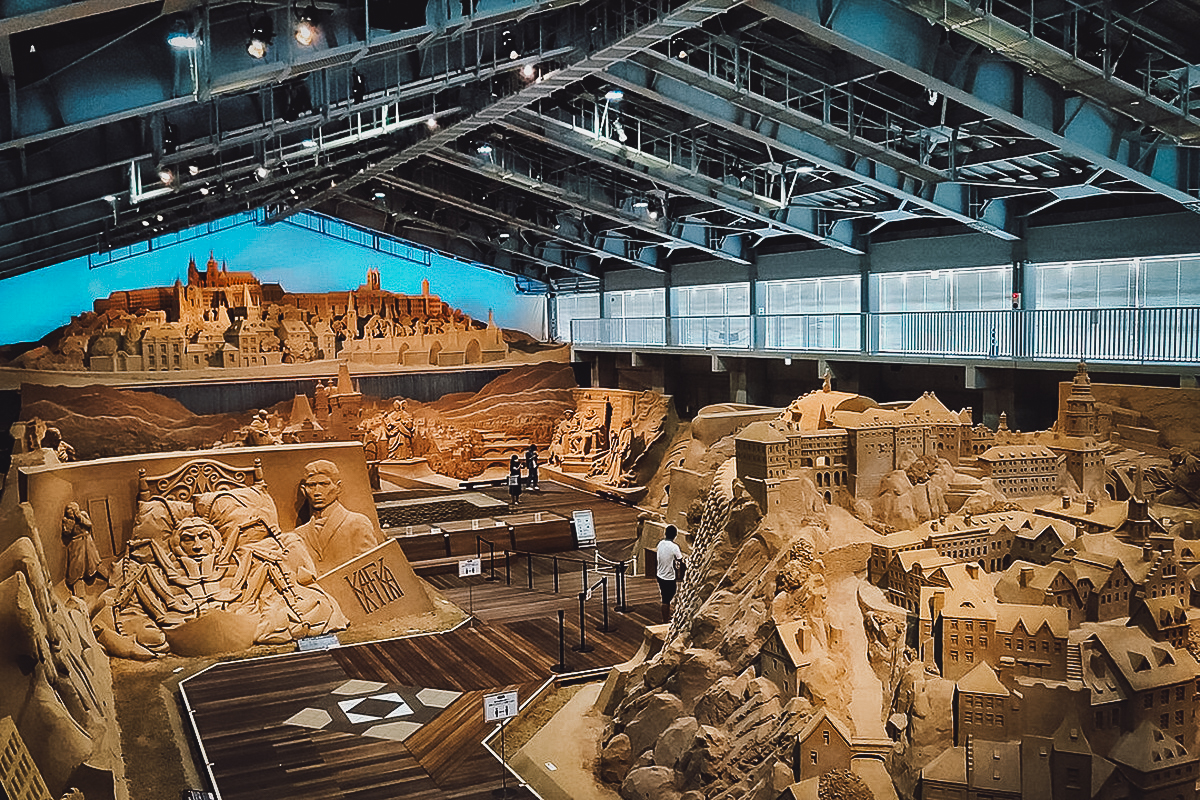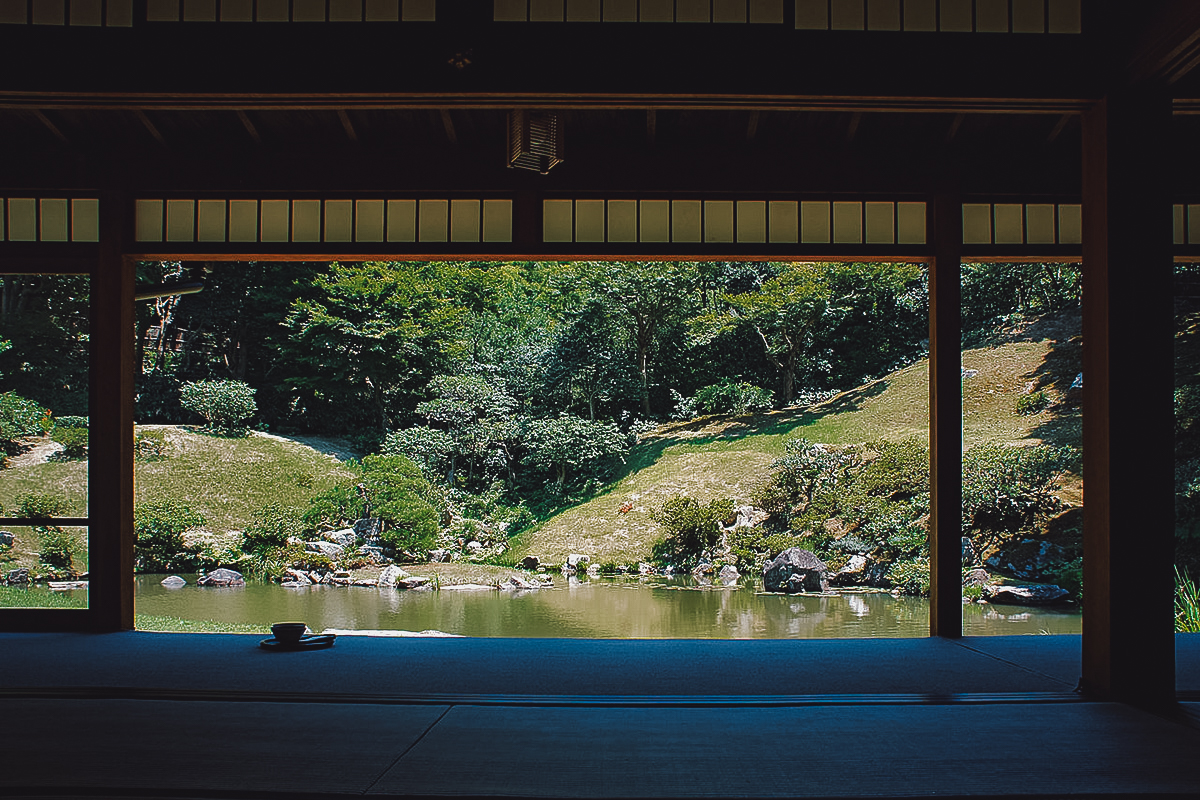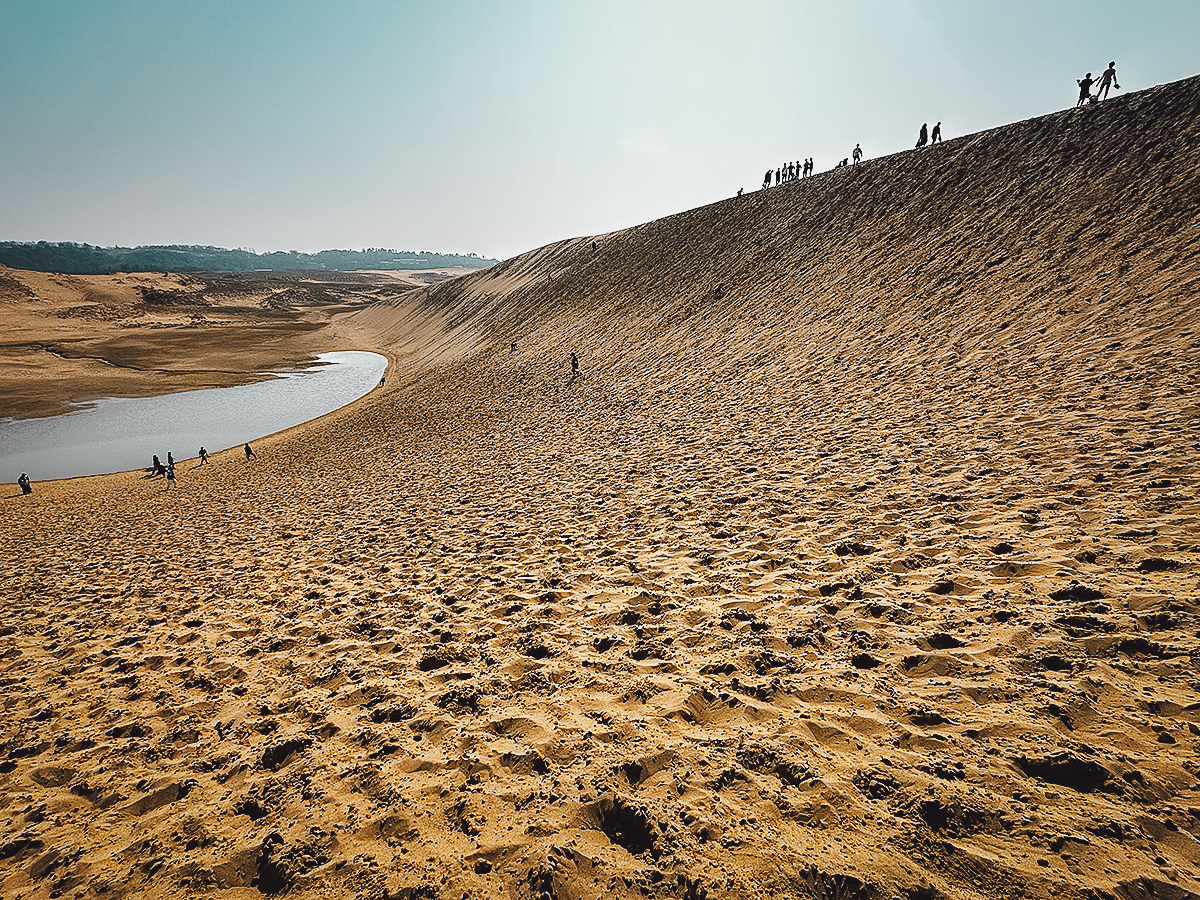SUMMARY HIGHLIGHTS
- Outside of the sand dunes, there isn’t a lot to do in Tottori City.
- Matsuba Crabs are in season from around mid-November till early March.
- The Kansai Wide Area Pass covers travel to Tottori.
When people think of Japan, they picture neon-lit cities, ancient temples, cherry blossoms, and sushi. But tucked away on the coast of the Chugoku region is one of the country’s most surprising sights – the Tottori Sand Dunes.
Stretching along the Sea of Japan for over 16 kilometers (9.9 miles) and reaching heights of up to 50 meters (164 ft)[1], these massive sand dunes look like they belong in the Sahara or Arabian deserts. Until I saw pictures, never did I think places like this existed in Japan!
Wind-sculpted and ever-changing, the Tottori Sand Dunes are a natural wonder that feels completely out of place in Japan. That’s what makes them so intriguing, and perhaps worthy of a detour.
VISIT TOTTORI QUICK LINKS
To help you plan your trip to Tottori, we’ve compiled links to recommended hotels, tours, and other travel-related services here.
HOTELS
Top-rated hotels near Tottori Station, one of the most convenient areas to stay for first-time visitors to Tottori.
- Luxury: Kansuitei Kozeniya
- Midrange: Hotel New Otani Tottori
- Budget: Toyoko Inn Tottori-eki Kita-guchi
EXPERIENCES
- Sightseeing Tour: Tottori Sand Dunes Private Tour
- Day Trip: Kurayoshi Customized Guided Tour with Lunch
OTHER SERVICES
GUIDE TABLE OF CONTENTS
TOTTORI AT A GLANCE
Located in the Chugoku region of western Honshu, Tottori is the capital city of Japan’s least-populated prefecture[2], also named Tottori. It’s best known for the Tottori Sand Dunes – a surreal stretch of coastal desert that looks like it belongs in North Africa, rather than coastal Japan.
Compared to tourist hotspots like Tokyo, Osaka, or Kyoto, Tottori operates at a much slower pace. It’s accessible using the Kansai Wide Area Pass and may be an interesting detour for people wanting something quieter and more off the beaten path in Japan.
BEST TIME TO VISIT TOTTORI
Like many places in Japan, the best times to visit Tottori are spring and autumn. The weather is comfortable, and the scenery is at its most striking. Think soft pink cherry blossoms in spring and fiery red and orange leaves in the fall.
Having said that, winter may be one of the more interesting times to visit Tottori. Matsuba Crabs are in season, and if you’re lucky, you’ll get a chance to see the sand dunes covered in snow.
From what I understand, Tottori is one of the few places in the world where you can see snow, sand, and sea all at once.
WHERE TO STAY IN TOTTORI
Tottori is a relatively small city that usually doesn’t require more than an overnight stay. For convenience, it’s best to stay near Tottori Station.
You can check Booking.com or Agoda for hotel listings around Tottori Station. Here are some of the top-rated hotels in the area:
- Luxury: Kansuitei Kozeniya
- Midrange: Hotel New Otani Tottori
- Budget: Toyoko Inn Tottori-eki Kita-guchi
THINGS TO DO IN TOTTORI
Climb Over Giant Walls of Sand
If someone showed you the photo below, would you think you were looking at Japan? Probably not, and that’s what makes the Tottori Sand Dunes so remarkable. They’re arguably one of the most unexpected sights you’ll come across in the country.
Stretching along the Sea of Japan, these massive dunes are Tottori’s most famous attraction. Some rise as high as 50 meters (164 feet) and span up to 2 kilometers (1.2 miles) wide. I huffed and I puffed and was completely out of breath when I reached the top.
Shaped over thousands of years, these dunes were formed when sand from nearby rivers was carried out to sea, then pushed back to shore by ocean currents[3]. It’s a natural wonder you wouldn’t expect to find in Japan, and that’s exactly what makes it so fascinating.

Be Amazed by Giant Sand Sculptures
With all that sand, you’d expect to find a few sand castles nearby. I was really excited to visit the Sand Museum, but unfortunately, it was between exhibits and closed at the time of my visit. Major bummer.
Just a short walk from the sand dunes, the Sand Museum is a museum dedicated entirely to sand sculptures. Exhibits are typically inspired by countries or regions and change every year. They usually run from around mid-April to early January, before shutting down for a couple of months in preparation for the next exhibit.

Photo by Drivephotographer, CC0 1.0, via Wikimedia Commons / Processed in Photoshop and Lightroom
Feast on Matsuba Crab
Crab is one of my favorite foods in the world. If you enjoy it as much as I do, then you may want to visit Tottori in winter. From around mid-November till early March, you can feast on Matsuba Crab, a prized delicacy from the San’in coastal region of Japan.
Matsuba Crab refers to male snow crabs caught from the Sea of Japan. Famous for their sweet and succulent meat, these crabs are said to owe their rich flavor to the plankton-rich waters they inhabit. They’re best when grilled or boiled and are one of the region’s most prized delicacies[4].

Enjoy Matcha and Wagashi at Kannon-in
After a long day of sightseeing, I find nothing more relaxing than sipping matcha in a Japanese garden. In Tottori, you can do just that at Kannon-in, a Buddhist temple best known for its landscaped garden.
After a day of frolicking in the sand dunes, you may want to enjoy matcha and wagashi at Kannon-in before heading back to your hotel.

Photo by 663highland, CC BY-SA 3.0, via Wikimedia Commons / Processed in Photoshop and Lightroom
VISIT TOTTORI FAQs
Is Tottori worth visiting?
I hate to say this, since I was so excited to visit Tottori myself, but I don’t think so. The sand dunes are an interesting novelty in Japan, but I don’t think it’s worth a dedicated trip, especially since there isn’t much else to do in Tottori City. To be honest, I found the city to be a little depressing.
If you have a Kansai Wide Area Pass, then visiting Tottori is a great way of maximizing your pass, but I don’t think the sand dunes are worth a lengthy detour on their own.
Can I swim along the coast of the Tottori Sand Dunes?
No, swimming along the sand dunes is prohibited under the “ordinance to protect and rear Japan’s Tottori Sand Dunes initiative”[5].
Is the Kansai Wide Area Pass worth it?
Yes, as long as you use it to visit some of the more distant destinations within its coverage area, like Tottori, Kinosaki Onsen, Okayama, and Takamatsu. Personally, I saved JPY 18,170 on transportation with the pass.
THE FINAL SAY
As unique a sight as they are in Japan, I don’t think it’s worth making a lengthy side trip just to visit the Tottori Sand Dunes.
However, if you’ve traveled to Japan numerous times and are ready to explore its secondary destinations, then Tottori may be for you, especially if you’re traveling with a Kansai Wide Area Pass.
Disclosure
This Tottori travel guide contains affiliate links, meaning we’ll earn a small commission if you make a booking at no additional cost to you. We only recommend products and services that we use ourselves and firmly believe in. We really appreciate your support as it helps us make more of these free travel guides. Arigato gozaimasu!
References
1. Sand Dunes (Tottori Sakyu). japan-guide.com.
2. Tottori Prefecture. Wikipedia. (2003, February 15).
3. Tottori Sand Dunes. Japan Travel.
4. Harper, Niaya (2018, December 28). Tasting Across the San’in Region, Japan Travel.
5. Tottori Sand Dunes boosts foreign language warnings to curb defacement by tourists. The Mainichi. (2019, May 21).

